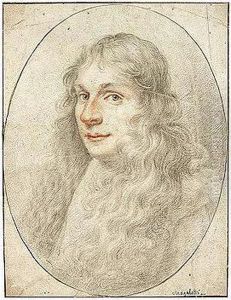Lorenzo Magalotti Paintings
Lorenzo Magalotti was born in Florence, Italy, in 1637, into a distinguished family that was deeply involved in the intellectual and cultural life of the city. His father, Ottavio Magalotti, was a patron of the arts and sciences, and his uncle, Lorenzo the Elder, was a cardinal. This environment undoubtedly influenced Lorenzo's early interest in both the humanities and the natural sciences. He was educated at the University of Pisa, where he studied philosophy, mathematics, and natural sciences, reflecting the broad scope of his interests that would mark his entire career.
Magalotti is often remembered for his association with the Accademia del Cimento, one of the first scientific societies in Europe, which was founded by Grand Duke Ferdinando II de' Medici and his brother Leopoldo de' Medici in 1657. As the secretary of the academy, Magalotti was at the forefront of promoting experimental science, following the principles of Galileo Galilei. He was responsible for compiling and editing the 'Saggi di Naturali Esperienze' (1667), the seminal publication of the academy, which detailed the experiments conducted by its members and became a foundational text in the history of scientific methodology.
Though his work with the Accademia del Cimento would have been enough to secure his place in the history of science, Magalotti's interests and contributions were not limited to this field. He was also a poet and a travel writer. His most famous literary work is the 'Lettere Familiari a' suoi Amici', a collection of letters written during his travels through Europe in the 1660s and 1670s, which offer vivid descriptions of the landscapes, peoples, and customs he encountered. These letters are prized not only for their historical value but also for their literary qualities, showcasing Magalotti's skill as a writer and his keen observational abilities.
Despite his contributions to science and literature, Magalotti's career took a different turn later in life. He entered the ecclesiastical state and held various diplomatic and administrative positions under the patronage of the Medici family. His later years were marked by a withdrawal from the scientific community and an increased involvement in religious and diplomatic affairs until his death in 1712.
Lorenzo Magalotti's legacy is that of a Renaissance man in the Baroque era, a figure who bridged the worlds of science, literature, and diplomacy with equal facility. His work with the Accademia del Cimento helped lay the groundwork for the experimental approach that would become characteristic of the Enlightenment, while his writings contributed to the cultural and intellectual exchanges that were a hallmark of his time.
